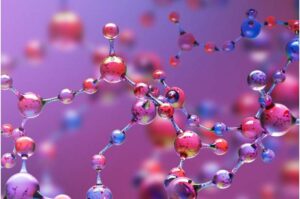In a groundbreaking development, scientists at UC Santa Barbara have introduced a cutting-edge method that combines the strengths of enzymes and small-molecule photochemistry, paving the way for novel catalytic reactions. The innovative photobiocatalytic process enables the synthesis of non-canonical amino acids, essential for therapeutic applications.
“This method addresses a crucial challenge in our field: how to create new catalytic reactions that transcend both biology and chemistry,” stated Professor Yang Yang, a co-author of the paper published in Science. “Moreover, the process is stereoselective, offering a preferred ‘shape’ for the resulting amino acid.”
The synergistic photobiocatalytic method involves two simultaneous catalytic reactions. On one side, a photochemical reaction generates an intermediary molecule that interacts with the reactive intermediate of the enzymatic process, leading to the formation of the amino acid.
The enzymatic part commences with an enzyme activating a readily available natural amino acid substrate to form an enzymatic intermediate. Simultaneously, a small molecule photocatalyst absorbs visible light, energizing another substrate and generating a short-lived radical species—the specialized tool of Yang Lab.
Though radicals are typically challenging to control due to their short lifespan, the Yang Lab overcomes this obstacle using the intermediate molecule produced by the enzymatic reaction, which captures
the radical. This ingenious system allows for efficient and stereoselective chemistry.The ultimate goal of the Yang Lab is to establish a platform for stereoselective non-canonical amino acid synthesis, crucial for peptide therapies. This process not only streamlines the synthesis, cutting three to five steps for certain amino acids with multiple stereogenic centers but also achieves high selectivity in the resulting molecules’ arrangements—a vital aspect of stereochemistry.
Moreover, the implications of this method extend beyond amino acid synthesis. It opens new avenues in both bio- and synthetic catalysis, facilitating the handling of challenging radicals, accessing previously inaccessible compounds, and unveiling undiscovered reactions. The pharmaceutical and biotech industries have already expressed interest in applying this revolutionary technology for amino acid synthesis. The future of catalytic reactions is now redefined.
Looking for latest chemistry and Pharma job openings, follow Rasayanika Facebook and Telegram and subscribe to our youtube channel for the latest updates on chemistry and Pharma job


















































